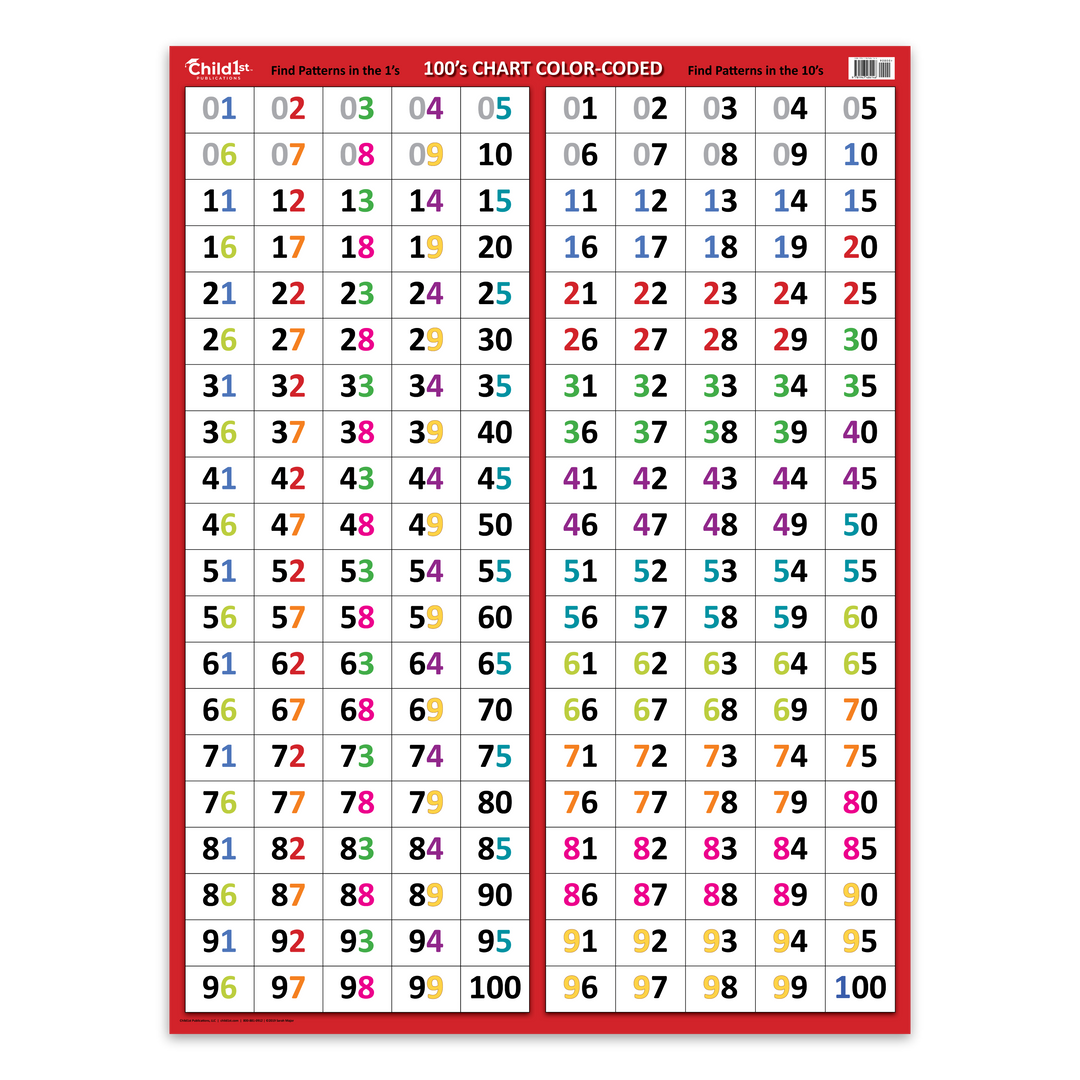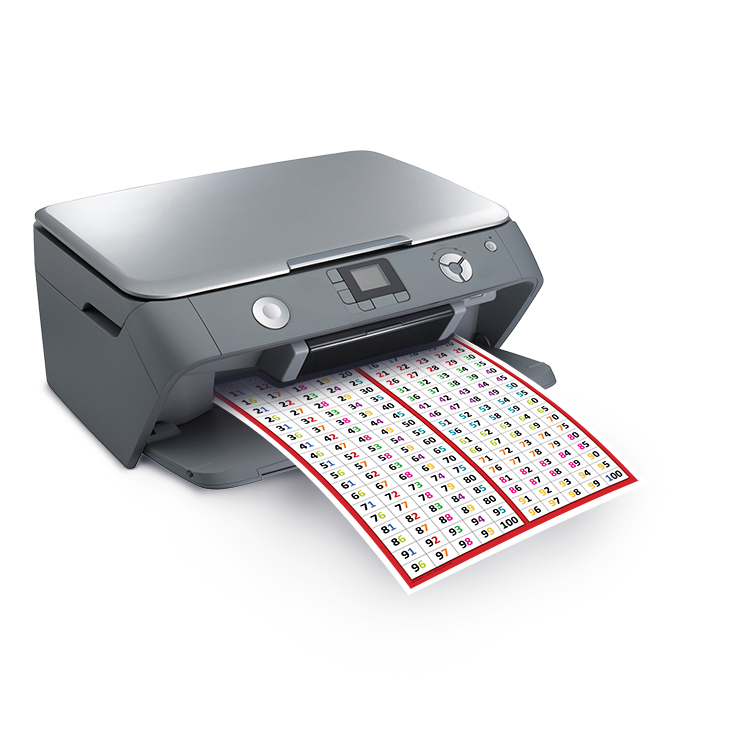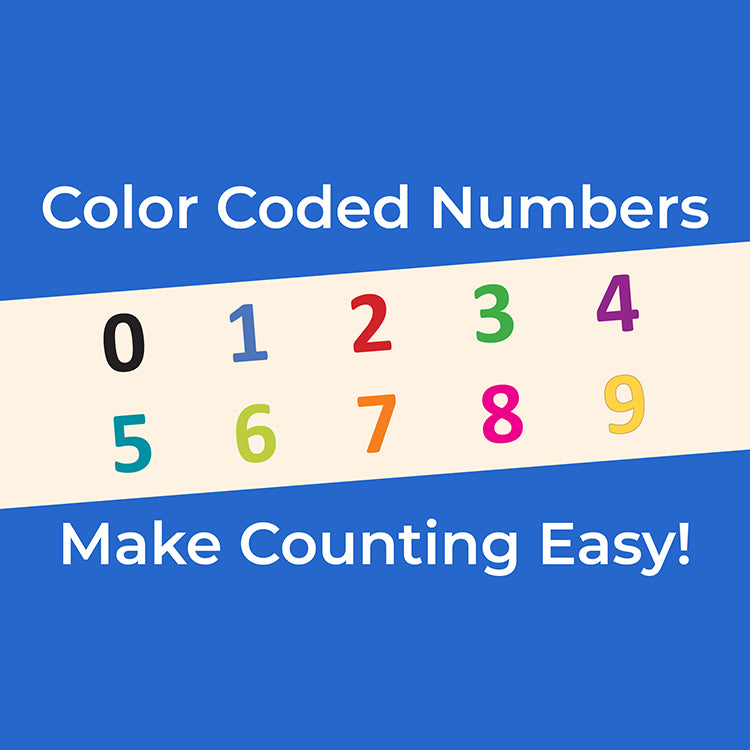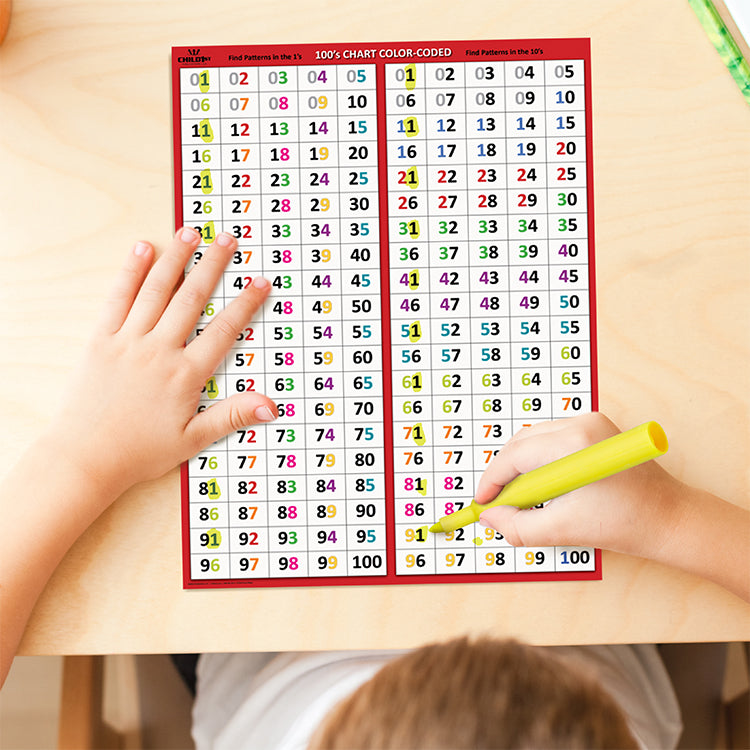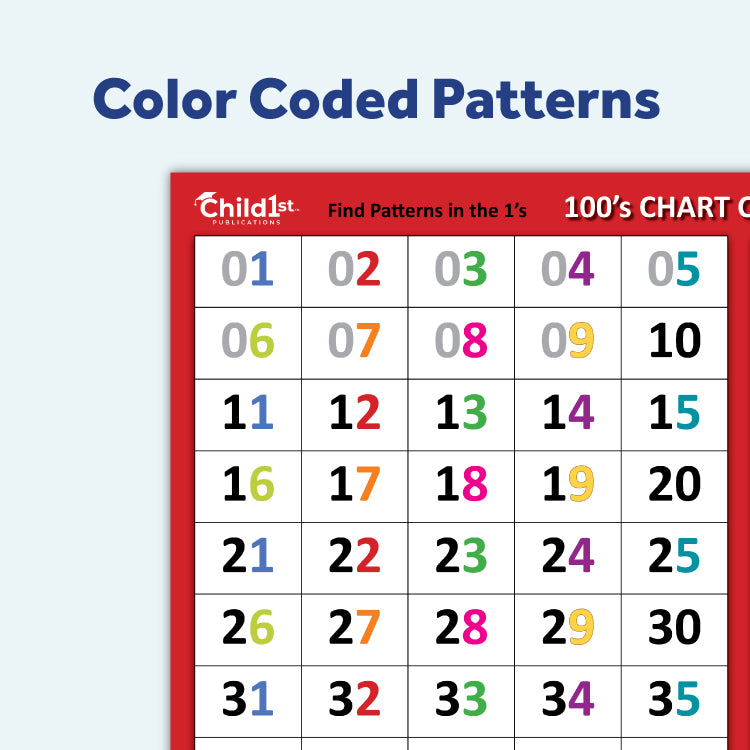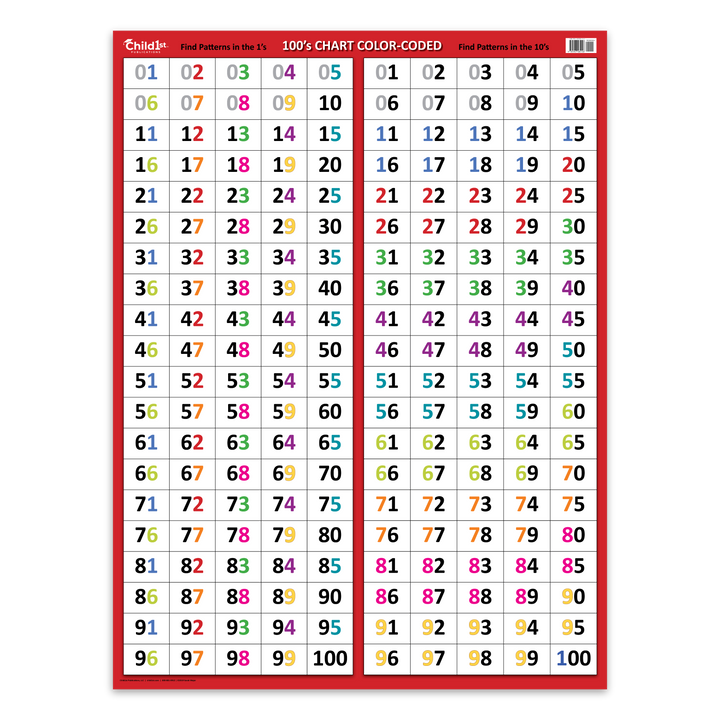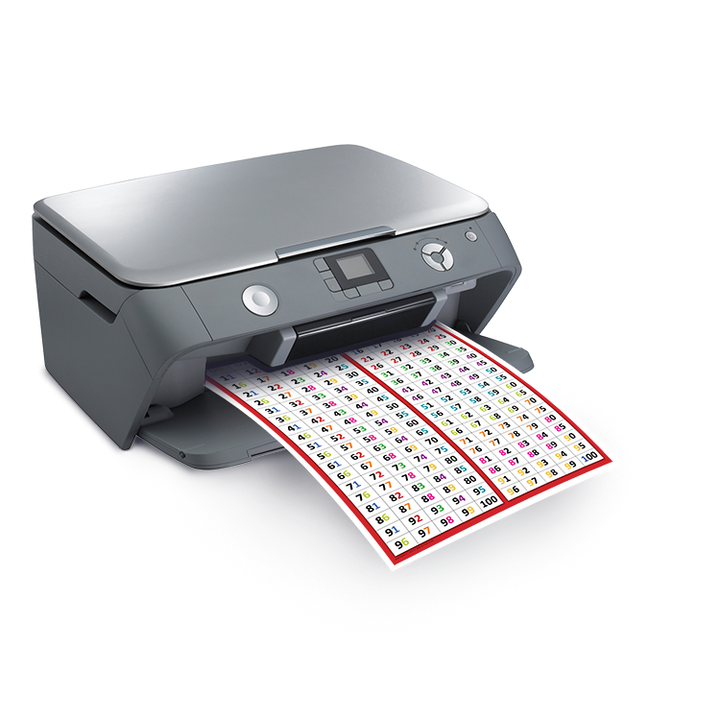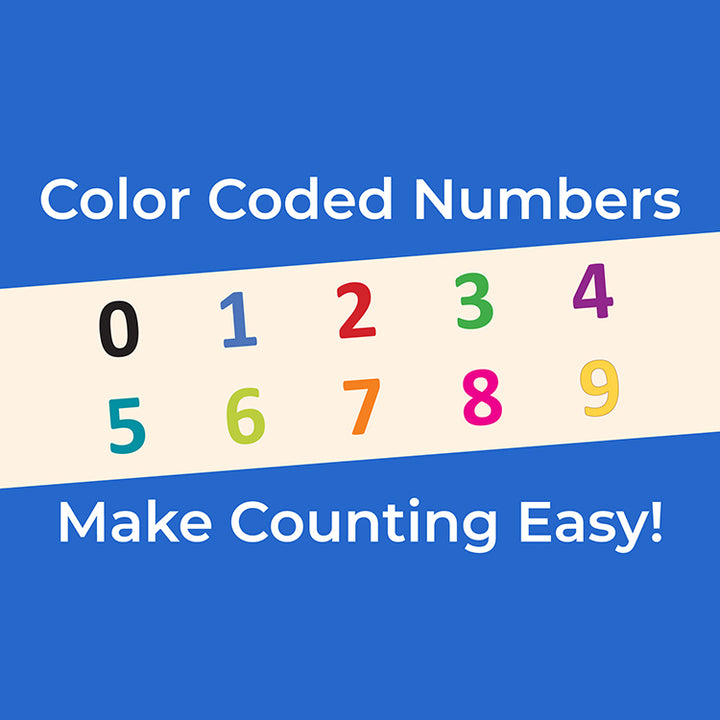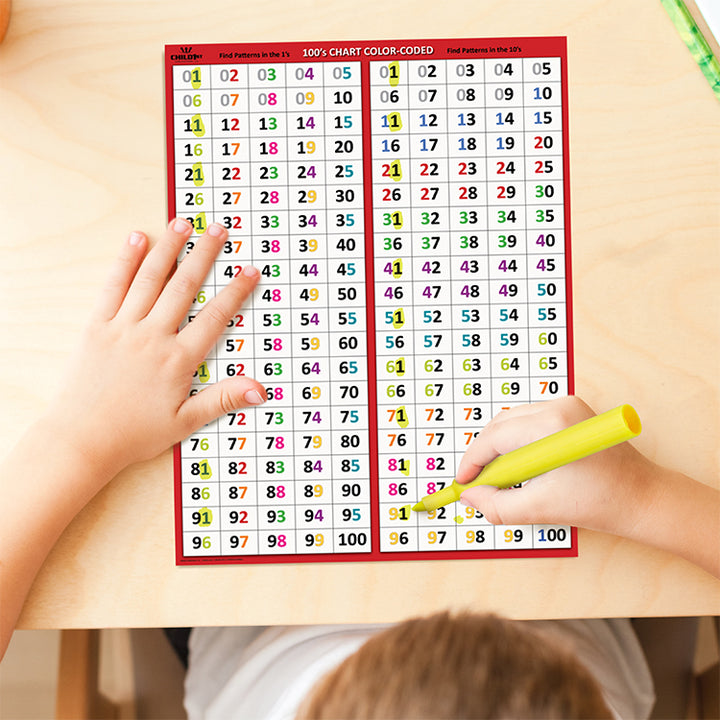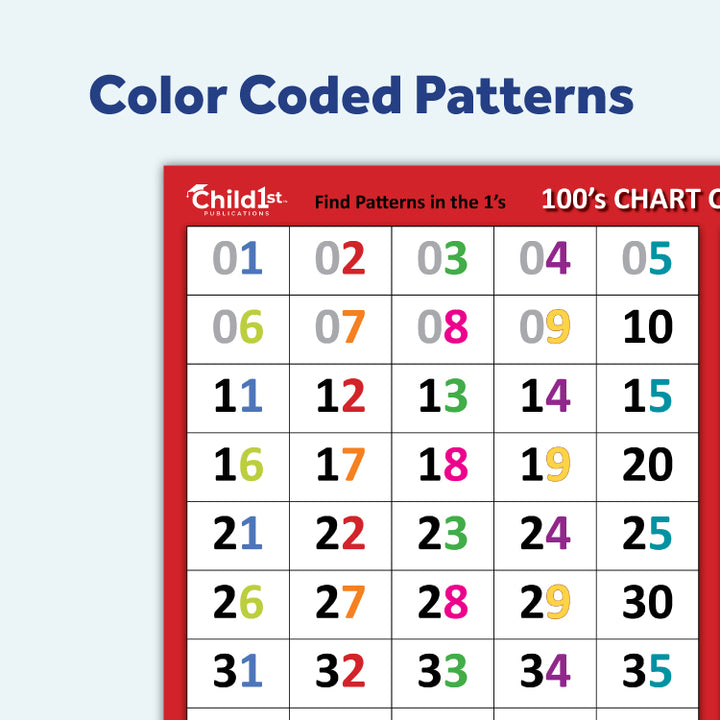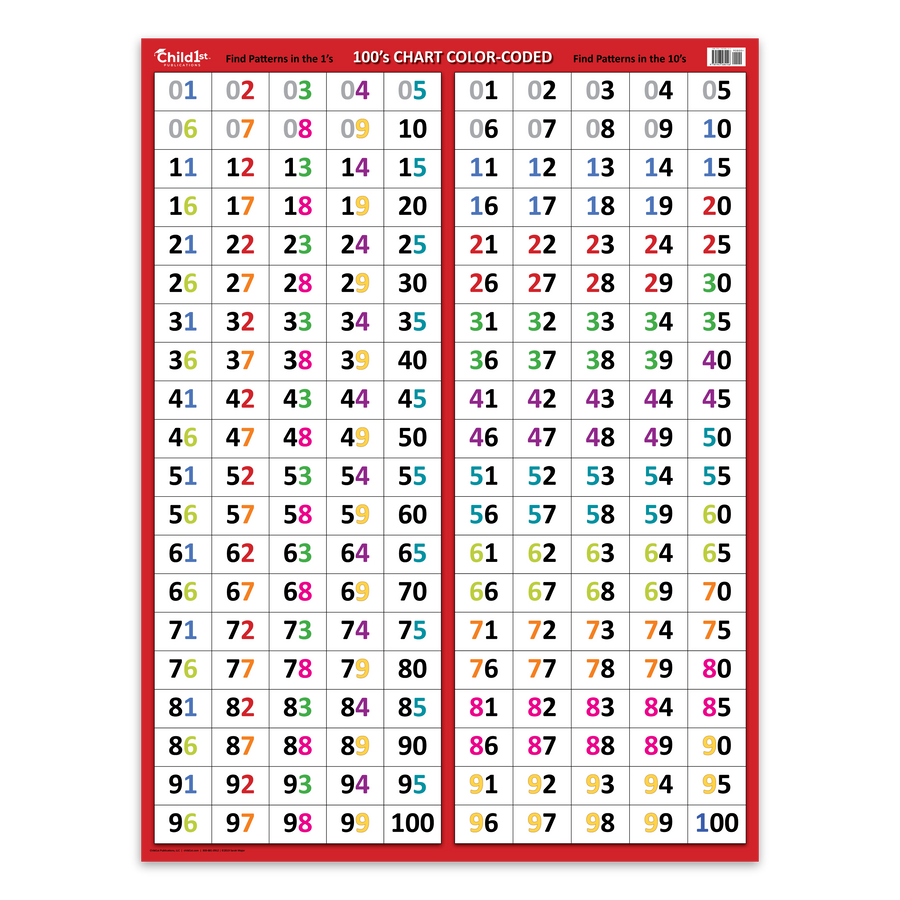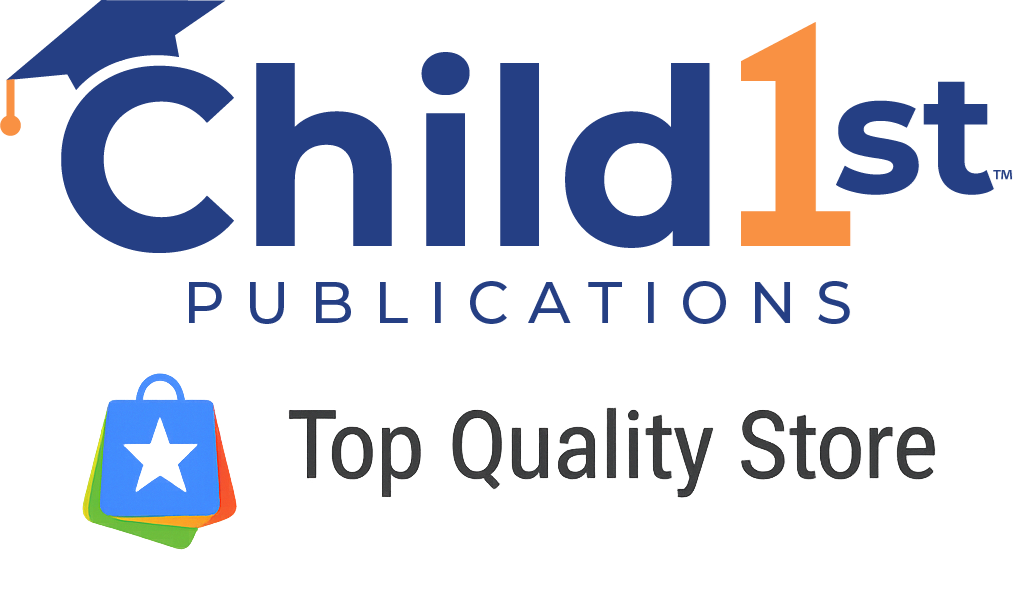How it Works
Our Color-Coded 100s Chart poster is a powerful tool for nurturing students' number sense through pattern recognition. Featuring two charts side by side, each meticulously color-coded for pattern-seeking in either the 1s or 10s columns, this poster empowers students to explore numerical relationships with ease.
Arranged in rows of 5, it facilitates counting money and telling time, making math concepts more tangible and accessible.
Students are encouraged to start with the 1s chart, identifying patterns and similarities between numbers before transitioning to the 10s chart to further hone their pattern-seeking skills.
Throughout lessons, allow ample time for students to discover patterns independently, fostering a sense of ownership and engagement in their learning.
Educators play a crucial role in modeling pattern discovery, aim to integrate it into every aspect of instruction to cultivate a culture of mathematical exploration.
By presenting groups of facts with common characteristics and guiding students through structured practice within patterns, educators empower students to develop fluency and confidence in math, laying a solid foundation for future learning success.
100s Chart Color-Coded Poster is available in two formats:
Physical – physical poster, measuring 36” x 48”
Download – printable PDF file of the poster
Both formats come with a download of pattern seeking activities.



